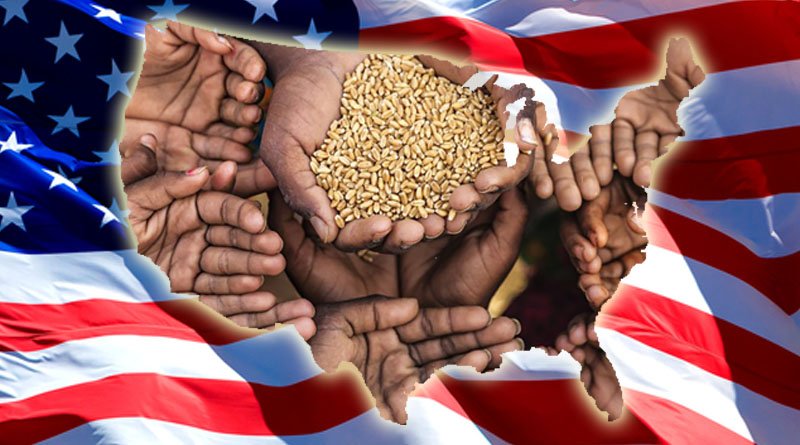The cost of putting food on the table is still prohibitively high for many Americans across the nation due to inflation and food prices that are still very close to records.

Supplemental Nutrition Assistance Program (SNAP) benefits have been expanded over the last three years due to the coronavirus pandemic, but as of Wednesday, they have been cut by an average of $90 per recipient, pushing the country towards a looming “hunger cliff,” according to food insecurity experts.
During the first three months of the pandemic, more than 6 million people enrolled in food stamps, a surge that was classified as an “unprecedented expansion” by Jason DeParle for The New York Times in 2021.
The Supplemental Nutrition Assistance Program, or SNAP, also known as food stamps, is the closest thing the United States has to a guaranteed income, according to DeParle. “Food stamps support young and old, healthy and disabled, the working and the unemployed,” she wrote. “The benefits are paid by the federal government without spending limits, even though they are administered by the states.”
SNAP benefits typically vary based on income, but during the temporary congressional expansion, recipients nationwide were offered the maximum aid for their household size. Some states opted to cut the emergency benefits in spring 2021, while 32 states and the District of Columbia maintained them through 2023.
Findings from the Urban Institute state that the emergency allotments kept 4.2 million people out of poverty in the fourth quarter of 2021. The benefits were cut months early as part of a bipartisan compromise surrounding a program to provide grocery benefits to replace school meals for low-income children.
According to the nonpartisan research and policy organisation Center on Budget and Policy Priorities, “every household” in those states will receive at least $95 less per month. “Due to their slightly higher but still modest incomes, some households that would typically receive low benefits under SNAP rules will see reductions of $250 or more per month. A typical person will receive about $90 less in SNAP benefits each month.”
In a statement to Salon Food, the Alliance to End Hunger’s executive director, Eric Mitchell, called the expanded benefits a “lifesaver for many individuals and families as jobs disappeared and the economy grinded to a halt.” While there is never a good time to make it more difficult for people to buy food, he continued, the decision to end benefits now comes at a particularly bad time.
Many Americans still find it prohibitively expensive to put food on the table across the nation due to inflation and food prices, according to Mitchell. “Millions of people will be at risk of hunger without these additional dollars.”
The cost of putting food on the table is still prohibitively high for many Americans across the nation due to inflation and food prices that are still very close to records.
Experts on food insecurity refer to the impending increase in food security as a “hunger cliff,” including Dr. Alice Reznickova of the Union of Concerned Scientists. For many of the 42 million people who rely on SNAP, “some organisations have been warning the public about the approaching hunger cliff,” Reznickova wrote in a recent report.
“The average person’s monthly SNAP benefits will decrease by about $82 per month. Without these additional benefits, so many people would now be at risk of going hungry, proving that pre-pandemic SNAP was insufficient.”
Reznickova contends that the SNAP pandemic expansion should be viewed as a long-term strategy in the fight against food insecurity.
The U.S. Department of Agriculture’s data, which shows that 10 to 15% of American households experienced food insecurity every year over the past 20 years, further supports the need to reassess eligibility. According to Mitchell, “we should keep investing in what works.”
He wrote, “Extra SNAP benefits and other programmes, like the expanded Child Tax Credit, have lifted millions of people out of poverty and helped reduce longstanding racial and ethnic disparities in rates of food insecurity. We will continue to work with Congress and the Administration to promote common sense policies that improve the lives and livelihoods of everyday people struggling to make ends meet because we know what is effective in this country for eradicating poverty and ending hunger.